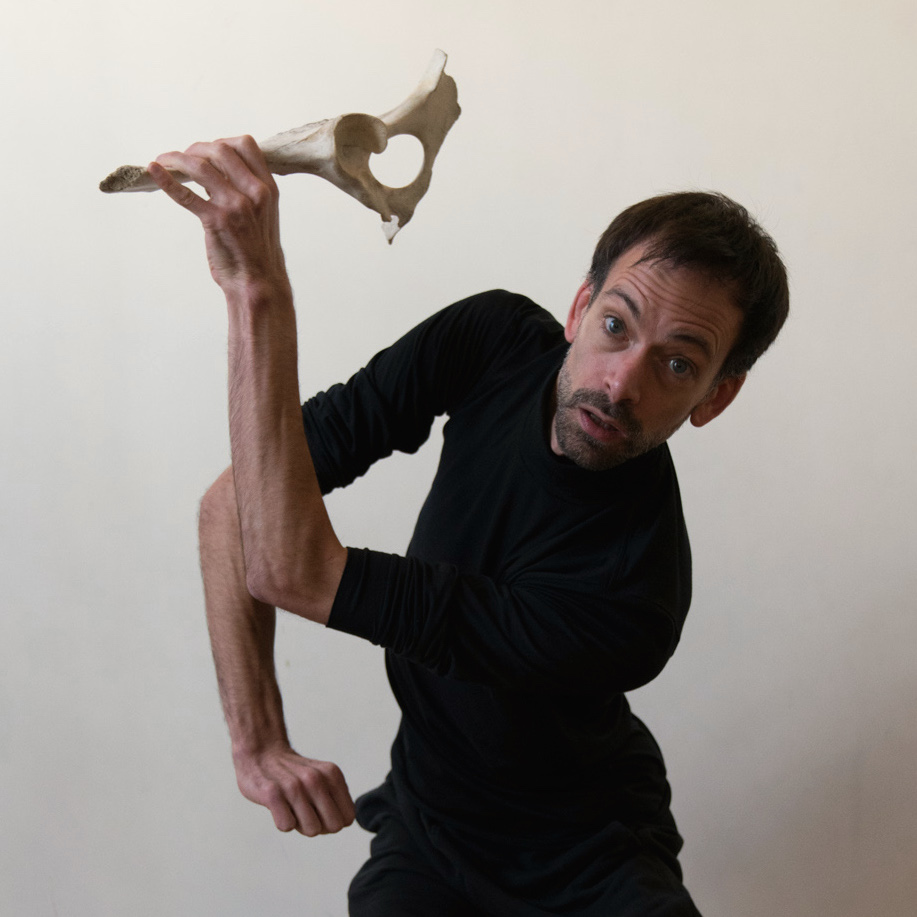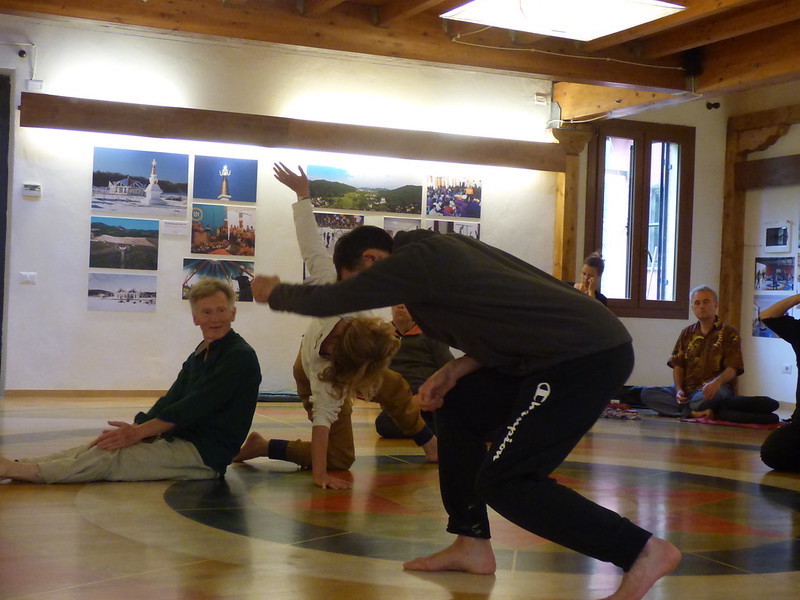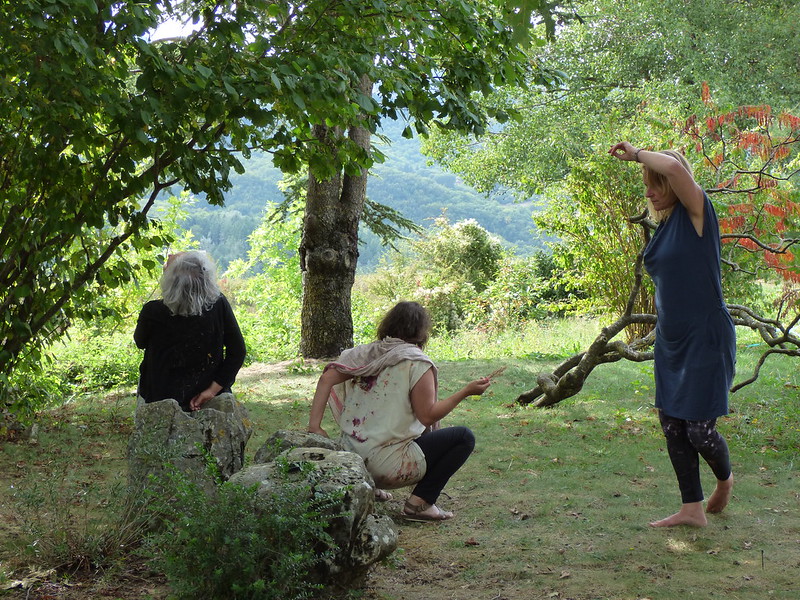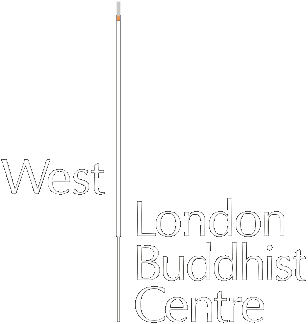Is the Dharma moving?
With the first of three monthly Creative Mindful Movement workshops coming up this Saturday, 12 October, 2-5.30pm, Alex Crowe, who is leading them, shares something of his experience of movement and how it connects to mindfulness and Buddhist practice.
 I started exploring movement at about the same time as I got involved in Buddhism and meditation. Right from the beginning, some 20 years ago now, I was intrigued by how they interrelated. My engagement with both has evolved since then. After some soulful and cathartic wigging out with Five Rhythms, I studied various more formal dance techniques in rather a driven way, until the experience of movement itself led me to understand how limiting that attitude can be. Now I practise improvisatory, non-stylised, somatic movement where the emphasis is much more on listening, awareness, connection and creative process (though still with scope for performance and high energy dancing at times – these things have their place!)
I started exploring movement at about the same time as I got involved in Buddhism and meditation. Right from the beginning, some 20 years ago now, I was intrigued by how they interrelated. My engagement with both has evolved since then. After some soulful and cathartic wigging out with Five Rhythms, I studied various more formal dance techniques in rather a driven way, until the experience of movement itself led me to understand how limiting that attitude can be. Now I practise improvisatory, non-stylised, somatic movement where the emphasis is much more on listening, awareness, connection and creative process (though still with scope for performance and high energy dancing at times – these things have their place!)
It’s easy enough to connect this kind of movement practice with the Dharma. Mindfulness of the body is, of course, a first foundation in Buddhist practice, and Buddhism provides a framework of views and values in which movement exploration can unfold, and helps make sense of the experiences it offers.
 Movement, for its part, provides ways of practising the Dharma that, for me, other approaches can’t always reach. I find that too much sitting meditation can leave me stiff and rather cut off from myself. Movement helps me feel at ease and at home in myself, with others, and in the world, and especially to feel how I’m part of the natural environment – such a crucial awareness in the age of climate breakdown. It also gives me access to imagination, creativity, and feeling, and provides a way of bringing to light what I’m habitually doing, feeling and believing unconsciously in daily life. It’s hard to explain in the abstract how this works; a vignette of the experience of the practice may help, and I’ve shared one below, taken from a movement retreat from which I’ve just returned.
Movement, for its part, provides ways of practising the Dharma that, for me, other approaches can’t always reach. I find that too much sitting meditation can leave me stiff and rather cut off from myself. Movement helps me feel at ease and at home in myself, with others, and in the world, and especially to feel how I’m part of the natural environment – such a crucial awareness in the age of climate breakdown. It also gives me access to imagination, creativity, and feeling, and provides a way of bringing to light what I’m habitually doing, feeling and believing unconsciously in daily life. It’s hard to explain in the abstract how this works; a vignette of the experience of the practice may help, and I’ve shared one below, taken from a movement retreat from which I’ve just returned.
The commonalities between these bodies of knowledge and practice may seem straightforward; but I still feel I’m only just starting to integrate them – it may be several lifetimes’ work! Still, one thing that becomes ever clearer is the essential role in both of sangha, in a broad sense of a collective of people practising together and supporting each others’ growth and exploration. So I very much appreciate being able to share movement practice with others at WLBC, and especially in our main shrine room.
Creative Mindful Movement runs as a series of three half-day workshops, 2-5.30pm on 12 October, 9 November and 7 December. Each one is free standing, but there will also be themes that develop through the series. You are welcome to book any or all of them. No prior experience needed.
Movement practice diary – Sunday 22 September
In my right hand I’m holding the bars from a broken children’s xylophone, and they jangle like windchimes as I move. On a whim, I have tied around my head a thin scarf, patterned in yellow and brown like the autumnal leaves around me on this hillside. I hear the voice of one of my companions from the other side of a bank of low trees: “Here is a tangled matted mass of sticks”, it ennunciates, and the shapes and rhythms of the words are a movement among the movements of the branches in the breeze and the birds out over the valley. It is answered by a burst of song from further down the slope below me. My body responds by turning, dropping to my knees and crawling further along this faint path through the bushes (a thought passes through: “are there badgers here?”). Close to the earth, I can smell its dampness as my hands and knees press into it. My body feels alive; it’s as if I can feel every cell.
 How did the four of find our way into this bizarre situation? It started from mindfulness; from moving in simple ways; from listening inwards and outwards. From there, from almost nothing, it has become this gradual journey of descent, each of us following our own impulses but staying aware of the others, and heightening our awareness of the moment by playfully calling out, occasionally, what we’re noticing around and within us. It’s like a procession. Like a performance – but there’s no-one watching; it’s for us, or for the place; or for its own sake. Certainly something sacred, and something primal.
How did the four of find our way into this bizarre situation? It started from mindfulness; from moving in simple ways; from listening inwards and outwards. From there, from almost nothing, it has become this gradual journey of descent, each of us following our own impulses but staying aware of the others, and heightening our awareness of the moment by playfully calling out, occasionally, what we’re noticing around and within us. It’s like a procession. Like a performance – but there’s no-one watching; it’s for us, or for the place; or for its own sake. Certainly something sacred, and something primal.
Further down the slope, I come across a bone lying in the grass, which I carry with me. Later, two of us find ourselves circling the edge of a large dried up pond, as I chant the Sakyamuni mantra. When we bury the bone in the damp, cracked mud, I feel we are laying something to rest, honouring it, mourning it – though quite what, I could not say. In the back of my mind, I am aware of how the changing climate may eventually transform this landscape which, for now, is so lush. Subsequently, we discover that one of our companions was, at that very moment, circling a stupa, further down the hillside, in which the ashes of a recently cremated Buddhist teacher are held; the other companion witnessing it all.
I cannot make sense of these happenings that arise spontaneously from the embodied imagination; but I do know they make sense, in ways that my little mind, chattering away, can never fully fathom.

Photos: Helen Edwards

